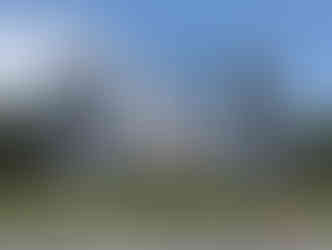Yerevan
- andrewmcn100

- Sep 1, 2023
- 3 min read
Updated: Sep 5, 2023

I arrived in Yerevan on the hottest day of the hottest month since records began.
The illiberal, unremitting heat made the city stiff and blistered like a horse in a tight bridle.
I spent four scorched days playing hopscotch between puddles of shade around the city, occasionally venturing out to water fountains like an anxious impala on the Masai.
In Yerevan it's hard to get past a certain sense of Ozymandias come to life. From atop the Yerevan Cascade, straight-cut Soviet stone and concrete spread ceaselessly out under the wide sky. Streetcorners are graced with 10-foot statues of stern men in long coats.
There is an irrefutable grandeur and stateliness around but it has an age to it, a feeling of the glorious and the inglorious fading together, of nostalgia, of waning, the refusal to surrender while juvenile sprouts of rebar and tinted glass fight up through the cracks.
Though Armenia is without doubt an antique land (its History Museum displays a 5,500-year-old leather shoe) there are no lone and level sands here. Instead, Mount Ararat creases the skyline with rude confidence away to the south of the capital, seeming both near and far away, large and small, protector and aggressor.

In search of something to do on my first night I came across a game in League A, the top domestic men’s basketball competition in Armenia. Free entry piqued my interest but should really have served as a warning. I made up one-eighth of the assembled fans as we watched some well-intentioned but utterly unglamourous basketball, saved mainly by the two overseas pros on one of the teams both dropping a triple-double (something which, according to a quick Google search, has only happened 15 times in the NBA).
Night two transported me from new mutiny back to ancient grudge: a performance of Khachaturian’s Spartacus at the National Opera and Ballet Theatre. Though shaped on the outside like an upside-down bucket sandcastle, the inside of the theatre harked back to the olden times with its opulent red carpet and giant, coruscant chandeliers.
The production was glorious: an orchestra meting out martial tempo with sweaty, unapologetic vigour, the dancers countering, tugging and stretching their flowing art into the tight, dark corners of rigidity.
My Armenian cultural triptych was completed, mostly inadvertently, on July 5th. Without realising it, I was in the capital for Armenia’s Constitution Day, an annual celebration of the country’s formation into a sovereign state after the break-up of the Soviet Union.
Yerevan’s Republic Square was awash with the country’s flag: printed across t-shirts, lit up on water fountains, and hanging from fire engines. A trio of fighter jets buzzed over the crowd a few times and there was singing, dancing and merriment in all directions.
This show of national pride and unity drew me into a comparison between Armenia and Bosnia, where I’d most recently been. Notwithstanding all their individual contextual differences, both were countries formed out of the dissolution of larger powers, both aren’t particularly fond of (some of) their neighbours, both lag on the edge of the EU and long for the prosperity of fuller membership. Both have genocide struck indelibly into their national identity and memory. Both seem to be moving forwards, inexorably, despite what appears to be irreparable loss and hardship writ deep in their past.
What is Europe? It seems less a place and more an idea. But what idea? Unity, collective prosperity, freedom, harmony? Skirting as I have its edge these past months, it has been a strange experience to discover such strong aspirations to join a union that the UK, my adopted homeland, has made an utterly inexcusable mess of leaving for the past 7 years.
I left Armenia in a minivan driven with the blend of creativity and relaxed imprecision found exclusively in the Caucasus, Yerevan’s tired 90s Ladas bobbing in our wake.
This parched old cracked land will remain on my mind long after it is out of sight.








































Comments